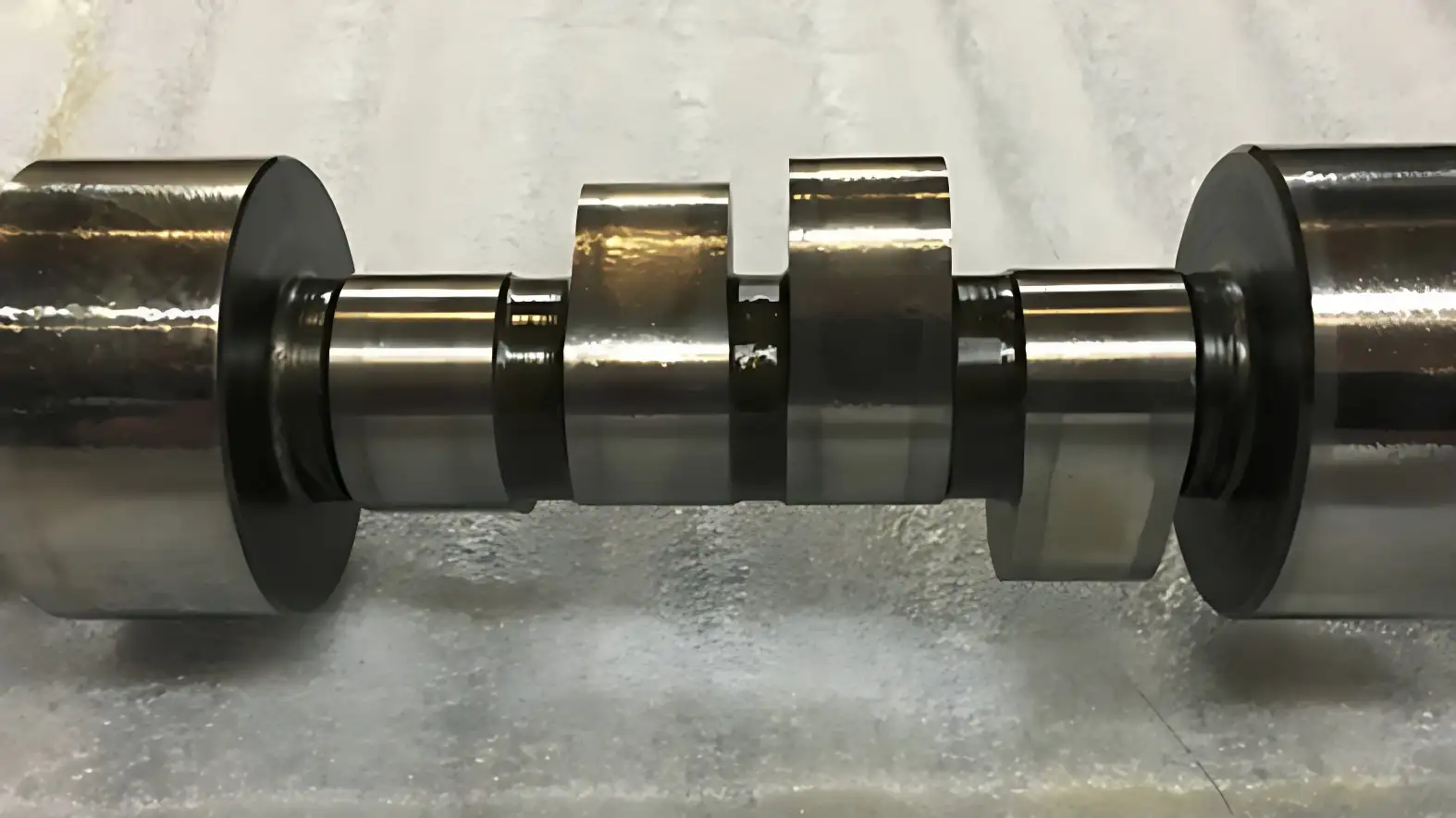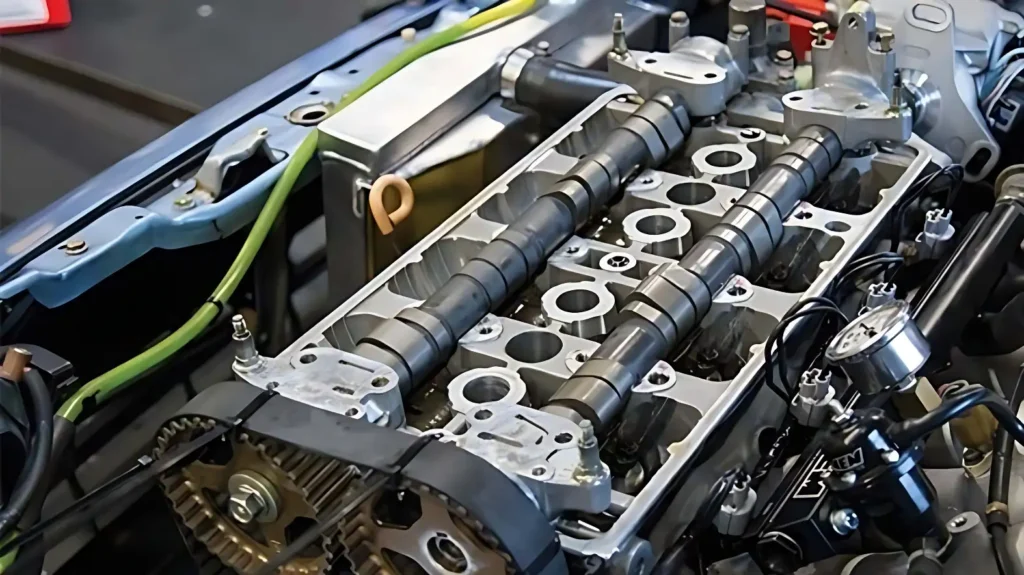Cam duration is an important factor in engine performance, but too much duration can have negative effects.
The ideal cam duration depends on several factors, including engine type, intended use, and other components.
In this blog, we will explore the factors that affect cam duration, the effects of too much cam duration, and how to determine the right cam duration for your engine based on its intended use and other key components.

how much cam duration is too much
Cam duration is considered too much when it exceeds the requirements of the engine’s intended use. For example, using a cam with a duration of 260-280 degrees on a street engine would result in poor low-end power, decreased fuel efficiency, and increased wear and tear on the engine. It’s important to choose a cam duration that’s appropriate for the engine’s use to optimize performance and longevity.
The table below provides a rough guide to suitable cam durations for different engine types and uses.
| Engine Type/Use | Recommended Cam Duration |
|---|---|
| Street | 220-240 degrees at .050″ lift |
| Drag Racing | 260-280 degrees or more |
| Circle Track Racing | 240-260 degrees at .050″ lift |
| Marine | 220-240 degrees at .050″ lift |
| Off-Road | 240-260 degrees at .050″ lift |
Factors affecting cam duration
There are several factors that can affect the ideal cam duration for an engine, including:
Engine type
The type of engine, such as a small block or big block, can influence the ideal cam duration.
This is because different engines have different valve train geometries, which can affect the cam profile needed for optimal performance.
Intended use
The purpose of the engine, whether it’s for street use, racing, or off-road, can impact the ideal cam duration.
Engines used for street driving typically require lower cam durations for better low-end power, while racing engines may require higher cam durations for increased high-end power.
Camshaft material

The camshaft is made from, such as cast iron or billet steel, which can affect the durability and performance of the camshaft.
Camshafts made from higher quality materials tend to be more durable and can support higher cam durations.
Valve spring pressure
The pressure of the valve springs can impact the opening and closing of the valves and the cam duration needed.
Higher valve spring pressures require higher cam durations for proper valve lift and duration.
Compression ratio
The compression ratio of the engine can impact the performance and ideal cam duration.
Engines with high compression ratios require higher cam durations to provide proper valve lift and duration.
Exhaust system
The design and configuration of the exhaust system can impact the performance and ideal cam duration.
Exhaust systems with less restriction can allow for higher cam durations, while more restrictive exhaust systems may require lower cam durations to optimize performance.
Effects of too much cam duration

Using too much cam duration in an engine can have several negative effects on its performance and reliability, like,
Reduced low-end power
Cam durations that are too high can result in poor low-end power, as the engine may not be able to produce sufficient torque at low RPMs.
This can make the vehicle feel sluggish and unresponsive, particularly during acceleration from a stop.
Decreased fuel economy
High cam durations can increase the amount of fuel required to operate the engine, resulting in decreased fuel economy.
This is because the engine must work harder to produce the same amount of power, resulting in increased fuel consumption.
Rough idle
Engines with high cam durations may produce a rough and unstable idle due to the irregular valve lift and duration.
This can cause the engine to shake and vibrate, making it uncomfortable to operate and potentially causing damage to other engine components.
Increased wear and tear
Using cam durations that are too high can cause increased wear and tear on the engine components, particularly on the valve train and camshaft.
This is because the higher lift and duration can cause increased stress and strain on these components, potentially leading to premature failure or damage.
Valve float
Cam durations that are too high can cause the valves to float at high RPMs, which occurs when the valves do not fully close between cycles.
This can cause damage to the valve train and other engine components and may result in decreased performance.
Poor drivability
Engines with high cam durations may be difficult to drive at low speeds, making them unsuitable for street use.
This is because the engine may produce low power at low RPMs, making it difficult to operate smoothly in traffic or at low speeds.
Determining the right cam duration for your engine

Determining the right cam duration for your engine is an important step in optimizing its performance and reliability.
There are several factors to consider when selecting the cam duration, including
Intended use
The intended use of the engine is a critical factor in selecting the right cam duration.
Engines designed for racing, for example, typically require a higher cam duration than engines designed for street use.
A camshaft with a longer duration can provide more horsepower at high RPMs, which is desirable for racing engines.
On the other hand, a camshaft with a shorter duration is preferable for street engines, as it can provide more low-end torque.
Engine type
Different engine types have different requirements when it comes to cam duration.
For example, a V8 engine may require a longer cam duration than a V6 engine to achieve optimal performance.
It is essential to match the camshaft to the specific engine type to ensure optimal performance.
Other engine components
The camshaft duration should be matched to other engine components such as the cylinder heads, intake manifold, and exhaust system.
If the camshaft duration is not matched to these components, it can result in poor performance and reliability.
Compression ratio
The compression ratio of the engine can affect the optimal cam duration.
Engines with high compression ratios may require a shorter cam duration to prevent detonation.
Desired powerband
The desired powerband of the engine should also be considered when selecting a cam duration.
A longer cam duration can provide more power at high RPMs, while a shorter cam duration can provide more low-end torque.
It is important to consider the intended use of the engine when selecting the right cam duration.
Manufacturer recommendations
Many engine manufacturers provide recommendations for camshaft selection based on their specific engine models.
These recommendations are based on extensive testing and are designed to provide optimal performance and reliability.
It is important to consider the manufacturer’s recommendations when selecting a cam duration.
Common cam duration ranges for different engine types and uses
The optimal cam duration for an engine can vary depending on the engine type, intended use, and other factors.
Here are some common cam duration ranges for different engine types and uses:
| Engine Type | Intended Use | Cam Duration Range |
|---|---|---|
| Small Block V8 | Street/Strip | 210-230 degrees @ 0.050″ |
| Big Block V8 | Street/Strip | 220-240 degrees @ 0.050″ |
| Small Block V8 | Race | 240-260 degrees @ 0.050″ |
| Big Block V8 | Race | 260-280 degrees @ 0.050″ |
| V6 | Street/Strip | 200-220 degrees @ 0.050″ |
| V6 | Race | 220-240 degrees @ 0.050″ |
These ranges are just a general guideline, and the optimal cam duration for an engine may vary depending on other factors such as compression ratio, desired powerband, and manufacturer recommendations.
It is essential to carefully consider all of these factors when selecting a camshaft for your engine to ensure optimal performance and reliability.
Faqs
How does cam duration affect engine performance?
Cam duration affects the engine’s power and torque output by controlling the amount of air/fuel mixture that enters the engine’s combustion chamber.
Longer cam duration can increase the engine’s horsepower, but can also decrease low-end torque.
How do I know if my cam duration is too much for my engine?
If your engine is experiencing poor low-end torque, stalling, or rough idling, your cam duration may be too long for your engine.
It’s important to consult with an experienced mechanic or engine builder to determine the appropriate cam duration for your engine and its intended use.
What are the consequences of having too much cam duration?
If your engine has too much cam duration, it can cause poor drivability, low-end torque loss, and stalling.
Additionally, excessive cam duration can cause valve train and piston interference, leading to costly engine damage.
Can I change my engine’s cam duration to improve performance?
Yes, changing the camshaft to one with a different duration can improve your engine’s performance.
However, it’s important to consult with an experienced mechanic or engine builder to ensure that the new camshaft is appropriate for your engine and its intended use.
Changing the camshaft requires careful tuning and calibration to ensure optimal performance and reliability.
Conclusion
Selecting the right cam duration for your engine is critical to achieving optimal performance and longevity.
While it may be tempting to choose a cam with a higher duration to increase power, going too far can result in negative effects such as poor low-end power, reduced drivability, and excessive wear on engine components.
It’s essential to carefully consider all of the factors that can affect cam duration and consult with an experienced engine builder or tuner to select the optimal cam for your specific application.
With proper consideration and selection, your engine can deliver the power and performance you desire without sacrificing reliability.
